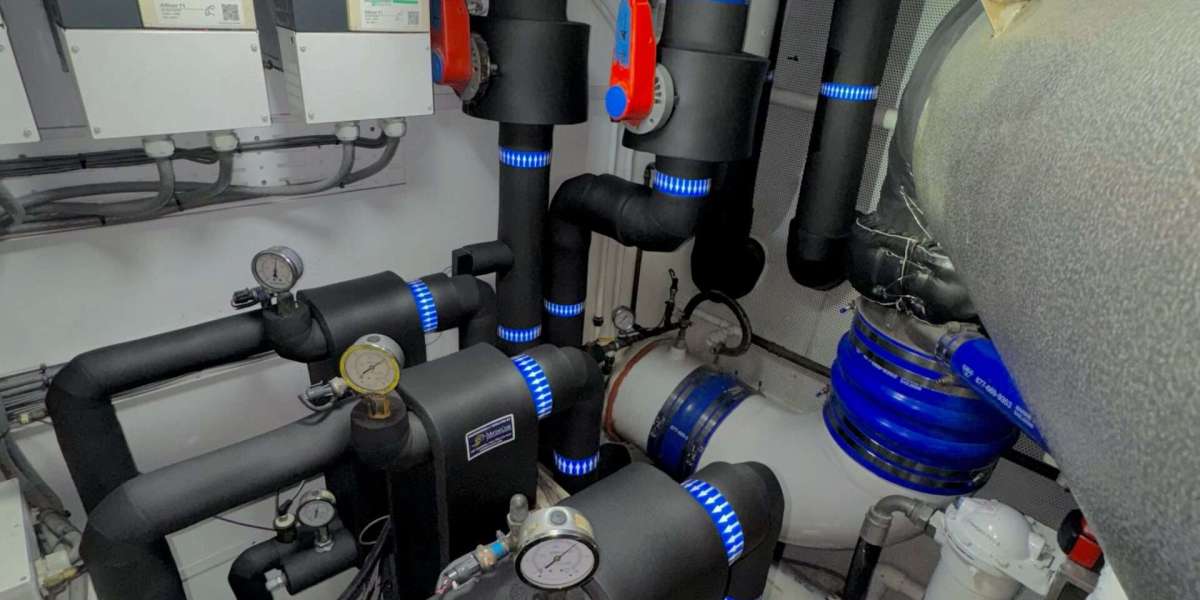Introduction
The vast expanse of the ocean, while rich in biodiversity, is increasingly threatened by human activity, particularly in the form of noise pollution. Marine mammals, such as whales, dolphins, and seals, rely heavily on sound to navigate, communicate, and find food in their underwater habitats. However, rising levels of human-generated noise from shipping, construction, and industrial activities are disrupting these vital processes. In response to this issue, marine noise insulation has emerged as a critical tool in mitigating the effects of harmful noise on marine species. This article explores the importance of marine soundproofing and the role of noise insulation in safeguarding marine mammal populations.
Understanding the Impact of Noise Pollution on Marine Mammals
Marine mammals are particularly sensitive to noise due to their reliance on echolocation and other forms of acoustic communication. For species like whales and dolphins, underwater sound is their primary mode of interaction with their environment. These animals use sound waves to detect prey, communicate with pod members, and even navigate through deep oceanic waters.
When ships, underwater construction projects, or military exercises create excessive noise, it can interfere with these vital activities. In some cases, the impact of prolonged noise exposure can be severe, leading to disorientation, stress, and even physical harm to marine mammals. For instance, loud noises have been linked to strandings, changes in migration patterns, and the disruption of breeding and feeding habits.
The Need for Marine Noise Insulation
To combat the harmful effects of noise pollution on marine life, researchers and engineers have focused on the development of marine noise insulation techniques. These techniques aim to reduce the intensity of underwater noise and provide a quieter environment for marine mammals. By minimizing sound pollution, these methods help protect the animals' health and ensure the continued vitality of marine ecosystems.
One significant approach involves the use of soundproofing technologies in vessels and other marine structures. These technologies can be integrated into ships, offshore drilling rigs, and underwater construction sites to absorb or deflect noise before it reaches the water. By incorporating noise-reducing materials into these structures, the disturbance caused by human activity can be significantly reduced, creating a safer environment for marine creatures.
Key Components of Marine Noise Insulation
1. Soundproofing Materials
The foundation of marine soundproofing lies in the materials used to absorb or block out sound waves. Acoustic panels, specialized coatings, and sound-absorbing foam are among the materials employed to dampen noise. These materials are typically installed in strategic locations within ships, offshore platforms, and other marine structures to ensure the sound generated during operation does not propagate through the water.
For example, the hull of a ship can be lined with sound-absorbing materials that reduce the amount of noise emitted into the surrounding waters. Offshore platforms can similarly utilize acoustic dampening systems to minimize the impact of drilling or other industrial activities.
2. Innovative Engineering Solutions
In addition to soundproofing materials, engineers have developed advanced techniques for minimizing the transmission of noise. One such solution involves the design of quieter propellers and engines for vessels, which significantly reduces the sound produced by ships. The use of vibration-damping systems also helps in decreasing the noise generated by the machinery on board.
Another important engineering strategy is the construction of barriers or acoustic enclosures around noisy machinery or construction sites. These barriers are designed to absorb sound and redirect it away from sensitive marine environments.
3. Marine Soundproofing for Underwater Construction
Construction activities, such as underwater drilling and dredging, are major contributors to underwater noise pollution. To address this, marine noise insulation is applied to underwater construction equipment, reducing the amount of noise produced during operations. By incorporating sound-absorbing materials into the design of construction equipment and employing quieter techniques, the impact on marine life can be reduced.
Moreover, some projects now implement real-time monitoring systems to measure noise levels in marine environments. This data helps to assess the effectiveness of noise mitigation strategies and allows for adjustments to be made if noise levels exceed safe thresholds for marine mammals.
The Role of Noise Insulation in Marine Mammal Conservation
The application of marine noise insulation plays a critical role in conserving marine mammals. By reducing noise pollution, these technologies help protect the sensory abilities of marine animals and ensure that they can continue to thrive in their natural habitats. Lower noise levels promote healthier migration patterns, more successful breeding, and increased food availability, all of which contribute to the overall health of marine ecosystems.
In addition to direct benefits for marine mammals, noise reduction also supports broader conservation efforts aimed at preserving marine biodiversity. Quieter oceans are not only more conducive to the survival of marine mammals, but they also create a more balanced environment for other species, including fish and invertebrates.
Preventing Strandings and Disruptions
One of the most critical concerns for marine mammal conservation is the phenomenon of strandings. These events, where whales and dolphins end up on beaches, are often linked to disorientation caused by loud underwater sounds. The use of marine soundproofing technologies helps prevent such occurrences by maintaining a quieter, less disruptive environment. By ensuring that marine mammals can navigate their habitats without the interference of excessive noise, the likelihood of strandings is greatly reduced.
Future Developments in Marine Noise Insulation
While marine noise insulation has made significant strides in recent years, ongoing research is needed to refine and enhance these technologies. Scientists are exploring new materials and innovative designs that can provide even greater noise reduction. Furthermore, the implementation of these technologies needs to be more widespread across the maritime industry to ensure that all marine mammals are protected.
As the demand for sustainable practices in the marine industry continues to grow, the role of noise insulation will become even more vital. Collaborative efforts between environmental organizations, industry leaders, and policymakers will be necessary to implement noise reduction measures on a global scale.
Conclusion
In conclusion, marine noise insulation is an essential tool in protecting marine mammals from the harmful effects of noise pollution. By reducing the sound generated by human activities in the ocean, these technologies create a safer and more sustainable environment for marine life. As the awareness of the impact of noise pollution grows, the continued development and implementation of marine soundproofing solutions will be crucial for the long-term conservation of marine mammals and the health of ocean ecosystems. Through continued innovation and collective action, we can ensure that the oceans remain a haven for all species, including those that rely on sound for survival.



